Programming
Principles for Men’s Programming
We need clear avenues for men to get involved.
Current research indicates men want to participate in ending GBV but may be uncertain as to how to get involved. The research also indicates that men are more likely to act to prevent GBV if they believe that other men are willing to act. Establishing and facilitating programs and curricula with men provide men an entry point to get involved, the opportunity to make a personal commitment, and the ability to engage in specific activities in their community. “Men who believe they have a role to play in preventing violence against women may be more likely to be engaged and can help keep program activities moving forward.” (Engaging Men & Boys as IPV Prevention Allies: Lessons Learned from DELTA FOCUS, June 2019)
Programming must be ongoing and address culture, actions, trauma, and personal responsibility.
Ongoing programming should provide space for men to explore and identify their values, goals, and unique identities; heal from the trauma of unhealthy masculinity expectations; define healthy masculinity; and develop and lead initiatives to end GBV in their communities. When developing programming, it is critical to ensure the Nine Principles of Effective Prevention Programs are considered in the development of the program – most importantly, sociocultural relevance.
Intersectional and culturally-responsive approaches are essential to men’s programming.
People’s experiences and likelihood to engage are shaped by race, ethnicity, nationality, gender, gender identity, sexual orientation, religion, age, and their connection with other cultural norms. Recognizing what motivates or discourages men–including culture and histories of trauma, oppression, and relationship to power–enables meaningful programming. A culturally responsive approach, regardless of what messages are used to motivate action, requires intentional engagement with community members to understand and address their diverse cultural needs. Developing programs and products with community members ensures they are culturally meaningful.
Questions to Consider
- What types of change in culture, beliefs, and behaviors are you seeking to make through your programming?
- What cultural values and history can your programming build on to promote healthy values amongst men to end GBV?
- Who in your community is best suited to facilitate programs and what training do they need?
Consider these research-informed frameworks and models when structuring your approaches to men’s engagement:
- Social-ecological Model
- “This model proposes that individual, interpersonal, community, organizational, and societal factors should be taken into account when planning and implementing health promotion interventions, because they have direct and indirect influences on lifestyle, behavior choices, and health.” (Israel, Checkoway, Schulz, and Zimmerman, 1994; McLeroy, Bibeau, Steckler, and Glanz, 1988).
- Social Reconstructionism
- Education can empower people as social change agents to address sexism, racism, poverty, and more to build a healthier society.
- Dominant and Counter-Stories
- Dominant cultures of masculinity produce powerful norms that can be harmful and constricting. Counter-stories offer healthy alternatives to the stories that the dominant culture reinforces.
- Identity-Based Motivation
- Engaging Men will be more effective if the healthier “counter-stories” are connected to social identities that are important to men, and come from men.
- Social-Emotional Intelligence
- Developing men’s social and emotional intelligence, including self-awareness and empathy, can counter dominant and controlling stories of masculinity.
- Pro-Feminist Framework
- Connected to the decades-old movement of men advocating against violence, this framework emphasizes the role of men in supporting women’s issues from pay equity to anti-violence efforts and role modeling for young men.
Resources and Tools for Developing Men’s Programming

Men in Focus: Unpacking Masculinities and Engaging Men in the Prevention of Violence Against Women
RESOURCE TYPE: Guide
AUTHOR: Our Watch
YEAR: 2020
DESCRIPTION: Guide providing existing research on masculinities and violence against women; how primary prevention efforts can best address and challenge these patterns; and effectively engaging men in the prevention of violence against women.

Engaging Men: Reducing Resistance & Building Support
RESOURCE TYPE: Guide
AUTHOR: Michael Flood, Josette O’Donnell, Benjamin Brewin, and Brianna Myors
YEAR: 2021
DESCRIPTION: Guide providing practical strategies for practitioners, advocates, and educators to reduce and prevent resistance and backlash when engaging men to build gender equality.

Choose Effective Policies & Programs
RESOURCE TYPE: Toolkit
AUTHOR: County Health Rankings
YEAR: 2021
DESCRIPTION: Toolkit guiding interested communities in selecting evidence-informed policies and programs to address priority issues and maximize community success.

Road Map for Male Allyship
RESOURCE TYPE: Report
AUTHOR: Equimundo
YEAR: 2019
DESCRIPTION: Report pulled from focus group and national survey data providing guidance for workplaces seeking to create cultures of respect, equality, and inclusivity.

Engaging Asian Men: Divesting from Gender Violence; Investing in Gender Equality
RESOURCE TYPE: Report
AUTHOR: Asian & Pacific Islander Institute on Domestic Violence
YEAR: 2013
DESCRIPTION: Report examining the sociocultural context of engagement of Asian men, including concrete suggestions for programming applicable across race.

Boys and Men as Partners for Advancing Gender Equality
RESOURCE TYPE: Infographic
AUTHOR: Equimundo
YEAR: 2020
DESCRIPTION: Infographic highlighting global research and evidence on how boys and men can influence gender norms in order to become full partners in achieving gender equality.

Breaking Free From Boyhood Stereotypes: Action Steps for Parents
RESOURCE TYPE: Tip Sheet
AUTHOR: Equimundo
YEAR: 2020
DESCRIPTION: Tip sheet providing recommendations for parents to play a role in creating a gender equal, nonviolent future and model vulnerability, connection, and respectful relationships.

Healthy Masculinity Fact Sheet
RESOURCE TYPE: Tip Sheet
AUTHOR: Men Can Stop Rape
YEAR: 2012
DESCRIPTION: One-pager outlining the Healthy Masculinity Action Project’s prosocial healthy masculinity norms to build the next generation of men who model strength without violence.

How to Promote Healthy Masculinity
RESOURCE TYPE: Tip Sheet
AUTHOR: White Ribbon
YEAR: 2019
DESCRIPTION: Tip Sheet identifying 10 straight-forward and simple tips for promoting healthier masculinities among boys and young men.

Addressing Stigma & Discrimination Against Bisexual & Gay Men
RESOURCE TYPE: Article
AUTHOR: Centers for Disease Control and Prevention
YEAR: 2016
DESCRIPTION: Article detailing the impact of discrimination and harmful attitudes towards bisexual and gay men and boys and offering steps that schools and parents can take to build healthier cultures.

Core Standards for Efforts to Engage Men in Preventing Gender-Based Violence
RESOURCE TYPE: Article
AUTHOR: Rus Funk
YEAR: 2018
DESCRIPTION: Article providing a collection of standards for practitioners, campuses, organizations, and coalitions as they develop or expand engaging men initiatives.

Adolescent Boys & Young Men
RESOURCE TYPE: Report
AUTHOR: Promundo
YEAR: 2016
DESCRIPTION: Report highlighting that girls and boys stand to reap lifelong benefits when young men and boys are engaged in a more holistic approach to gender equality.

Working Together with Men
RESOURCE TYPE: Guide
AUTHOR: HealthWest Partnership
YEAR: 2020
DESCRIPTION: Guide aiming to inspire and assist with the creation of grassroots community mobilization movements that engage men to prevent violence against women.

Best Practice in Consent Education
RESOURCE TYPE: Article
AUTHOR: Michael Flood
YEAR: 2021
DESCRIPTION: Article providing an overview of effective practices in consent education, including evidence of the effectiveness of sexual violence prevention education.

Clarifying the “Engaging” in Engaging Men
RESOURCE TYPE: Article
AUTHOR: Rus Funk
YEAR: 2018
DESCRIPTION: Article providing an overview of what “engaging” looks like in the context of engaging men in gender equality to bring clarity to goals, objectives, and related activities.

Continuum of Evidence of Effectiveness
RESOURCE TYPE: Guide
AUTHOR: Richard Puddy, Natalie Wilkins
YEAR: 2011
DESCRIPTION: Guide supporting the process of determining program effectiveness and providing common language to discuss evidence-based decision making.

Engaging Men & Boys
RESOURCE TYPE: Toolkit
AUTHOR: New York State Coalition Against Domestic Violence
YEAR: 2021
DESCRIPTION: Toolkit supporting groups and individuals to discover and determine the role they wish to play in changing their communities and the appropriate strategies for doing so.

Engaging Men & Boys as IPV Prevention Allies
RESOURCE TYPE: Toolkit
AUTHOR: preventIPV
YEAR: 2019
DESCRIPTION: Toolkit features stories from three coalitions that implemented programs to engage men and boys and highlights main findings, tools for practitioners to adapt, and related resources.

Engaging Men & Boys in Gender Equality & Health
RESOURCE TYPE: Toolkit
AUTHOR: Promundo, United Nations Population Fund, and MenEngage
YEAR: 2010
DESCRIPTION: Toolkit providing examples of effective programs and offering guidance on advocacy, needs-assessment, monitoring, and evaluation related to engaging men and boys.
Programs and Curricula
The following selection of programs and curricula offers local coordinators, organizers, and organization/system leaders diverse options to engage men and boys in the prevention of GBV.
These existing programs and curricula, specifically designed to implement with men and boys, assist men and boys in building and sustaining healthy relationships, becoming active bystanders and leaders in ending GBV, and promoting healthy masculinity and respectful manhood. While some have been developed to engage specific cultural groups, it is important to review and adapt curricula and programs for cultural and linguistic relevance.
Questions to Consider When Reviewing, Selecting, and Adapting Programs
- How is your community involved in the development and implementation of your program?
- Is there a specific group of men in your community you are looking to engage (i.e. age, race, activities, physical location, etc.) and what types of change would you like to see?
- What aspects of these programs can you build on and adapt to meet your community’s specific needs?
- What types of evidence are important to you and your community to consider when implementing a program?
- How can our programs meet men “where they are at” and integrate into pre-existing spaces and cultural practices?

Boys As Allies
CREATOR: National Black Women’s Justice Institute
YEAR: 2021
DESCRIPTION: The Boys as Allies curriculum is designed to teach Black boys and young men skills to understand and critically evaluate the behaviors and ideologies that often lead to sexual violence against Black girls in the community as well as schools. The lessons and activities throughout the curriculum address some of the root causes that lead to sexual violence and help boys understand complex relationship dynamics that could lead to sexual violence in schools.

COMPASS: A Guide for Men
CREATOR: Alaska Men Choose Respect
YEAR: 2014
DESCRIPTION: COMPASS: A Guide for Men is a resource for adult men who mentor young Alaskan men aged 12 to 18. COMPASS presents mentors with opportunities and activities designed to support young men as they explore and identify their values, goals and unique identities. These strategies are designed to be easily incorporated into the day-to-day interactions that already exist between mentors and youth in team sports, camping, hiking, fishing, hunting and other activities.

Engaging Men & Boys in Gender Equality & Health
RESOURCE TYPE: TOOLKIT
AUTHOR: Promundo, United Nations Population Fund, and MenEngage
YEAR: 2010
DESCRIPTION: Toolkit providing examples of effective programs and offering guidance on advocacy, needs-assessment, monitoring, and evaluation related to engaging men and boys.

Coaching Boys into Men (CBIM)
CREATOR: Futures Without Violence
YEAR: Ongoing
DESCRIPTION: CBIM is an evidence-based prevention program that trains and motivates athletic coaches of men’s sports teams to deliver 12 weekly conversations on issues of healthy relationships, masculinity, and bystander intervention. Researched at High School and Middle School levels, adapted for college and beyond.

Conversation Starters for Kids
CREATOR: Global Boyhood Initiative.
YEAR: 2020
DESCRIPTION: These Conversation Starters aim to open up conversations between kids and parents. Informed by research, they are specifically designed to help kids, and boys in particular, to learn to share emotions in healthy ways; accept and connect with others; stand up and speak out against bullying; and break free from stereotypes.

Curriculum for a Feminist Men’s Group
AUTHOR: Matt Goldfield & Jonah S. Boyarin
YEAR: 2017
DESCRIPTION: This curriculum is a collection of agendas and meeting notes of the Feminist Men’s Group that met regularly until July 2019. The meeting topics range from “Homophobia & Workshopping a Dilemma from One Member’s Men’s Group” to “Interrupting Other Men’s Harmful Behaviors”, and serves as a resource for future conversations and to inspire the work of future feminist men’s groups.

Hombres Unidos Contra la Violencia Familiar
CREATOR: Migrant Clinicians Network
YEAR: 2005
DESCRIPTION: This is the first initiative aimed at the primary prevention of sexual and intimate partner violence in the Latino migrant community. It is a peer-led, five session curriculum that was designed to increase the knowledge and skills among migrant men to prevent sexual and intimate partner violence and change the attitudes that support sexual and intimate partner violence.

Manhood 2.0
CREATOR: Equimundo
YEAR: 2018
DESCRIPTION: Manhood 2.0 is a gender-transformative initiative developed to engage adolescent boys and young men (ages 15-24) in reflecting on the impacts of harmful gender norms, specifically with the aims of preventing teen pregnancy, dating violence, sexual assault, and LGBTQ bullying, and to build healthier relationships.

It’s Your Business: HBCU Bystander Intervention Curriculum
AUTHOR: Campus Technical Assistance and Resource Project
YEAR: 2018
DESCRIPTION: This curriculum was developed in response to a need for a targeted and culturally specific bystander education curriculum that empowered students, faculty, and staff at HBCUs with the skills and strategies to prevent campus gender violence (sexual assault, dating/domestic violence, stalking). The curriculum offers a bystander intervention approach that is reflective of the HBCU culture and historical legacy in civic engagement and social justice.

Live Respect: Gender and Racial Equity Curriculum
CREATOR: A Call to Men
YEAR: 2021
DESCRIPTION: Created for coaches, advocates, and educators to implement with boys between ages 10-18. Focus on: promoting healthy and respectful manhood; decreasing language and actions that degrade women and other marginalized groups; challenging harmful cultural and social norms; decreasing instances of bullying and homophobia; and promoting healthy relationships.

MOST Club (Men of the Strength)
CREATOR: Men Can Stop Rape
YEAR: Ongoing
DESCRIPTION: Men Can Stop Rape’s youth development program, the Men of Strength Club, is the country’s premier primary violence prevention program for mobilizing young men to prevent sexual and dating violence. The MOST Club follows a 22 week curriculum that provides young men with a structured and supportive space to build individualized definitions of masculinity that promote healthy relationships. Email Men Can Stop Rape for more information.

Mentors in Violence Prevention (MVP) Program
AUTHOR: Mentors in Violence Prevention
YEAR: Ongoing
DESCRIPTION: MVP is both a program and an approach to sexual harassment, gender violence, and bullying prevention that can be implemented at different levels in multiple and varied educational and workplace settings–from high schools and colleges to organizational leadership and the military.

The Men’s Story Project
CREATOR: The Men’s Story Project
YEAR: Ongoing
DESCRIPTION: The Men’s Story Project is a scalable storytelling and dialogue project that brings critical dialogue on social ideas about masculinity into public forums around the world – via men’s own stories. In the MSP, men, boys, and folks who identify in any way with masculinity publicly share personal stories that help transform social ideas about masculinity – so as to support health and equality for all people. The MSP is rooted in a feminist, anti-racist, intersectional framework.

Outside the Box
CREATOR: ABAAD, United Nations Women
YEAR: 2017
DESCRIPTION: This manual is a compilation of a series of activities, exercises, and handouts on masculinities that consolidates the experiences and skills that have been accumulated throughout past training into a tool that provides the required information needed for a skilled trainer to conduct trainings on masculinities and engaging men. Furthermore, this manual is the first contextual and culturally validated tool and provides tools to work with men on a personal level in order to redefine and question their attitudes towards women and their gender roles.

The Rural Challenge Toolkit
AUTHOR: The Rural Challenge Project
YEAR: 2017
DESCRIPTION: This toolkit is for practitioners and community organizations who wish to engage with their communities to prevent violence against women and work with the community to promote gender equality. It includes background theory and knowledge, practical ideas for implementing the project, all the materials needed to run the Rural Challenge workshops, and a gender equality action plan tool.
Films & Videos
Goals and Uses of Films & Videos
Documentaries are great tools to start conversations in communities on the need to engage men in efforts to reduce GBV. Community programs can host a documentary viewing with facilitated discussions. High schools and college campuses can incorporate these in related coursework. Fraternities can host a night in for a film and discussion about how they can support their campus in promoting healthy masculinity and participate in reducing GBV on campus. Viewings among groups of parents can lead to discussions about how parents can promote healthy masculinity and talk about consent with their children. These efforts spark communities’ desire to come together to address the issue of GBV in a deeper, more sustainable way. They can be used in curriculum with men where the whole documentary is viewed and processed as a group or sections are viewed to have conversations on specific topics throughout a curriculum.
These documentaries provide insight to the issue of GBV, the impact it has on women and girls, an understanding of the socially constructed definition and expression of masculinity that perpetuates GBV, and the need to promote healthy masculinity, respectful manhood, and equality to end GBV. Some documentaries listed have accompanying discussion guides. These films and videos can be incorporated into new curricula designed to support men in building and sustaining healthy relationships, becoming active bystanders and leaders in ending GBV, and promoting healthy masculinity and respectful manhood.
Questions to Consider
- How are you using the videos? For a public event? Incorporating into training or curriculum? Informing the development of a public awareness campaign?
- What specific topics will grab the interest of your community? Is the topic culturally relevant for your community?
- Do you have a designated staff to provide continuous relationship building for your Community Action Team?What specific topics will grab the interest of your community? Is the topic culturally relevant for your community?
- What training or support does my team need to engage a diverse group of people (in terms of race, sexuality, and more)?
Documentaries
- Audrie and Daisy(USA, 2016)
- Themes include: Sexual Violence; Cyberbullying; Bystander Intervention; Mental Health
- Hip-Hop: Beyond Beats and Rhymes (USA, 2006)
- Themes include: Hip-Hop and Media; Masculinity; Misogyny; Homophobia
- My Masculinity Helps (USA, 2013)
- Themes include: Black masculinity; Sexual Violence; Men who experience GBV; Violence Prevention
- Roll, Red, Roll (USA, 2018)
- Themes include: Sports; Rape Culture; Social Media
- The Bro Code: How Contemporary Culture Creates Sexist Men (USA, 2011)
- Themes include: Misogyny; Masculinity; Media
- The Bystander Moment (USA, 2018)
- Themes include: Bystander Intervention; Peer Pressure; Rape Culture
- The Feminist on Cellblock Y (2018)
- Themes include: Incarceration; Feminism; Masculinity; Unlearning Toxic
- The Mask You Live In (USA, 2015)
- Themes include: Masculinity; Social Norms; Mental Health; Fatherhood; Violence
- The Men’s Story Project: Out Loud! (Chile, 2014)
- Themes include: LGBTQ+; Family; Bullying; Religion; Fatherhood
- Tough Guise 2: Violence, Manhood & American Culture (USA, 2013)
- Themes include: Violence; Media; Masculinity
Short Videos
- Bill Hamid Educates Men on Domestic Violence Awareness
- Boys won’t be boys. Boys will be what we teach them to be
- Charlie Coleman Talks about Rape Culture and His Sister Daisy’s Sexual Assault
- Cycling through Consent
- How To Get High Schoolers To Rethink Sexual Consent And Assault
- Jackson Katz: Violence against women – It’s a men’s issue
- Machismo hurts men too
- Men Against Domestic Violence
- Men Challenge 60
- Men, own your role in domestic violence
- Promundo’s When Men Change
- Rethinking Manhood
- Springfield Technical Community College’s Heart of a Man Series
- The Role Men Can Play in Preventing Domestic Violence
- Vera House “To Be a Man”
- Violence Against Women & Why It’s Up to Men to Stop It | The Daily Show – Trevor Noah
- What Does “Be a Man” Really Mean?
- What is the Patriarchy
- What It’s Like to be a Woman at the Gym
- Why I’m Done Trying to be “Man Enough”
Public Education Campaigns
Goals and Uses of Public Education Campaigns
The purpose of a public education campaign is to promote social norms that reduce the occurrence of GBV and provide basic facts and education to audience members. Public education campaigns include strategies such as posters, digital messaging, newsletters, brochures, public service announcements for TV and radio, and awareness events with consistent messaging to reach broad audiences across communities.
Communities can replicate national public education campaigns, some of which are listed below, or create specific campaigns to engage men in ending GBV. Campaigns can be hosted during certain awareness months (ex. National Sexual Violence Resource Center’s annual theme for Sexual Assault Awareness Month visible on a college campus during the month of April) or campaigns that are visible year-round (ex. #CommittedMen, Aid to Victims of Domestic Abuse, Inc.’s ongoing campaign to engage men in utilizing healthy relationship skills with intimate partners through social media, presentations, community events, posters, billboards, bus ads, key chains, and more.)
Best practices in developing messaging for men:
- Let the community lead the development of the public education campaign.
- Emphasize the actions and commitments that men can make to end GBV.
- Frame men as a part of the solution to ending GBV, rather than part of the problem.
- Incorporate culturally and community-specific values and ideas.
- Hire local designers to create the campaign graphics or videos.
Questions to Consider
- What types of change in culture, beliefs, and behaviors are you seeking to make through your public education campaign?
- What values or recent events in your community could a public campaign build on to make the messages poignant and meaningful in your community?
- To what extent is your campaign’s content and development representative of your community (race, sexuality, disability, and more)?
- What is your dissemination plan? What resources exist to disseminate campaign materials broadly? Where are men most likely to receive public messaging?
Resources for Creating Public Education Campaigns

Breaking Free From Boyhood Stereotypes: Action Steps for Parents
RESOURCE TYPE: Tip Sheet
AUTHOR: Global Boyhood Initiative, Promundo, The Geena Davis Institute on Gender in Media, and the Kering Foundation
YEAR: 2020
DESCRIPTION: Tip sheet providing recommendations for parents to play a role in creating a gender equal, nonviolent future and model vulnerability, connection, and respectful relationships.
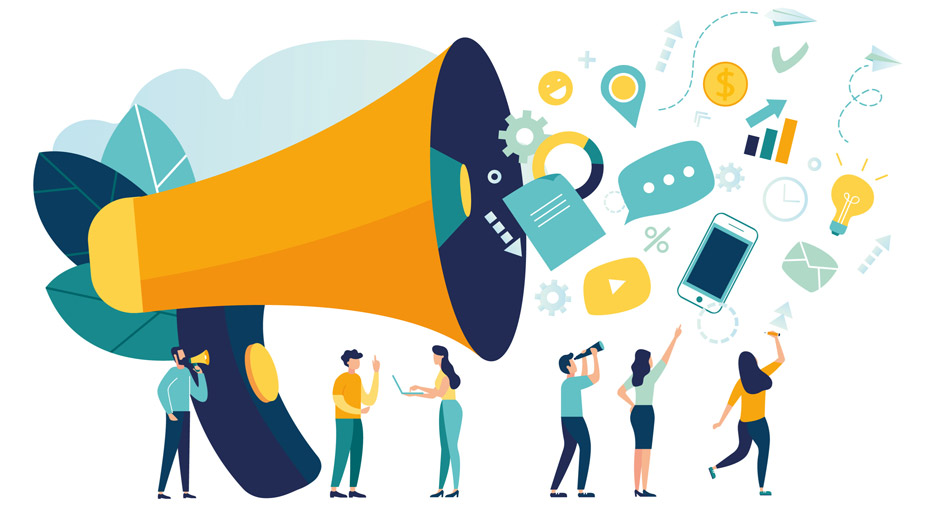
Creating an Effective Public Education Campaign
RESOURCE TYPE: Guide
AUTHOR: National Sexual Violence Resource Center
YEAR: 2010
DESCRIPTION: Guide to support communities through the steps of planning a successful campaign to raise awareness and public knowledge about an issue with 9 tangible steps and timeline guidance.
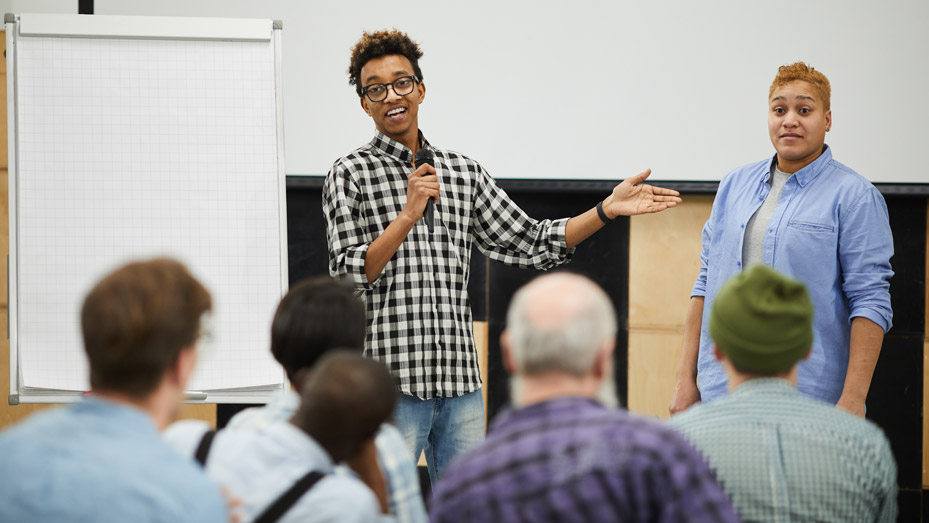
Communicate
RESOURCE TYPE: Toolkit
AUTHOR: County Health Rankings
YEAR: 2021
DESCRIPTION: Toolkit designed to guide interested communities in developing strategic messaging and delivering those messages effectively.
Campaign Examples
- Te Invito Campaign by the National Latin@ Network and Esperanza United
- Because We’re Dads by the New York State Coalition Against Domestic Violence
- The White Ribbon Campaign
- It Starts With You by White Ribbon
- Day After Day by White Ribbon
- Men of Quality by White Ribbon
- Committed Men by AVDA
- Walk a Mile in Her Shoes
- Engaging Men Campaign by Futures Without Violence
Organizations
Programs, documentaries, films, and public education campaigns that engage men in ending GBV continue to grow as research and funding grow in this field. The organizations listed here have led efforts to engage men and continue to develop new and innovative programming. Individuals leading engaging men programming in their community can sign up to receive e-newsletters or follow these organizations on social media to remain connected and informed about new initiatives. These organizations may also be able to provide consultation and technical assistance to support your efforts.
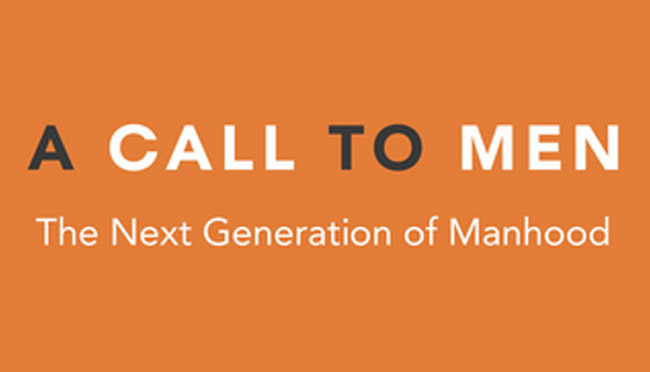
A Call to Men
DESCRIPTION: A Call To Men has mobilized hundreds of thousands of men to become allies to women and girls and work to transform society by promoting healthy, respectful manhood and offering trainings and educational resources. A Call to Men is data-driven organization, while simultaneously being community organizers devoted to meeting people where they are.
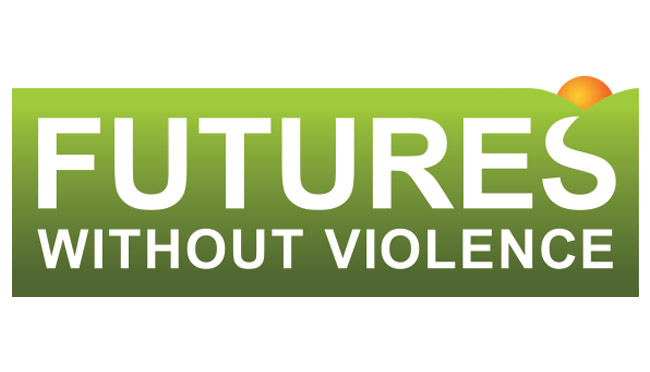
FUTURES
DESCRIPTION: FUTURES is a national health and social justice organization that provides groundbreaking programs, policies, and campaigns to empower individuals and organizations working to end violence against women and children around the world, including their work on Engaging Men. Through programs such as Coaching Boys into Men and National Institute on Fatherhood and Domestic Violence, FUTURES offers an array of toolkits, technical assistance documents, and more related to Engaging Men.

Gendes
(Mexico)
DESCRIPTION: GENDES, AC is a Mexican civil society organization specialized in working with men that promotes reflection, intervention, research and advocacy processes from a gender perspective. Their emphasis is on masculinities and human rights, in order to promote and strengthen egalitarian relationships that contribute to the development of society.
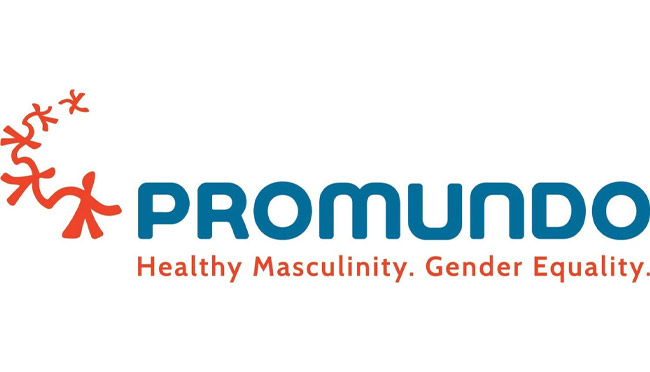
Instituto Promundo
DESCRIPTION: Promundo is a global leader in advancing gender equality and preventing violence by engaging men and boys in partnership with women, girls, and individuals of all gender identities. Their research, programs, and advocacy efforts show that exploring positive models of “what it means to be a man” and promoting healthy, respectful masculinity leads to improvements in the lives of women and girls, as well as in men’s own lives, and the lives of individuals of all gender identities.
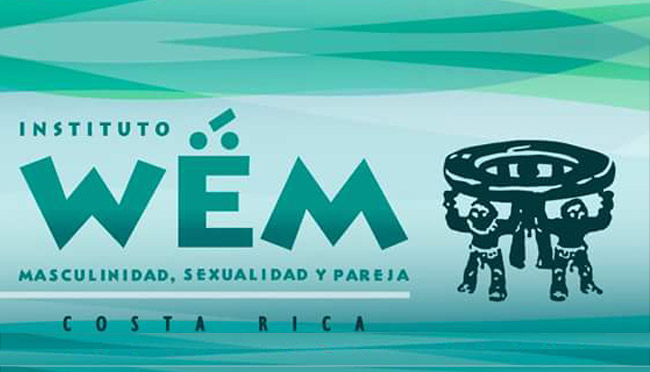
Instituto WEM
(Costa Rica)
DESCRIPTION: The Costa Rican Institute of Masculinity, Couple and Sexuality (Instituto WEM) is a non-profit association that emerged in late 1999, as an NGO to work on issues of gender, masculinities, sexualities and couples. Wem is a word from the Bribri indigenous group of Costa Rica Bribri, which means “man”. Over the years, the WEM Institute has established itself as an organization that works on gender issues mainly with men, on issues such as violence, gender equality, youth, promotion of new masculinities, paternity and sexualities.
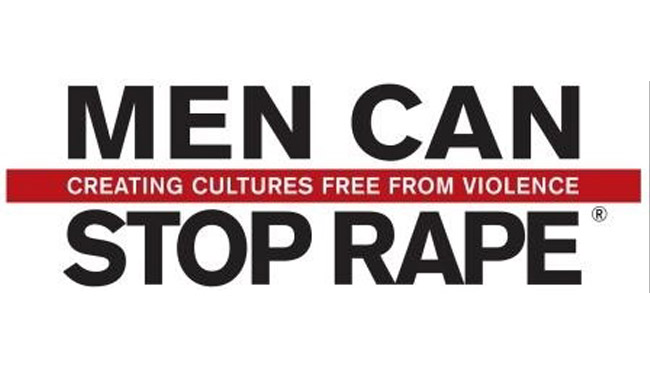
MCSR (Men Can Stop Rape)
DESCRIPTION: Men Can Stop Rape (MCSR) is an organization created to mobilize men to use their strength for creating cultures free from violence, especially men’s violence against women. MCSR offers training and technical assistance, youth development, public education, among other things to institutionalize primary prevention of men’s violence against women through sustained initiatives that generate positive, measurable outcomes in populations throughout the world.

Men Stopping Violence
DESCRIPTION: Men Stopping Violence is a 39-year-old organization whose mission is to engage men and communities to take action to end violence against women. Through partnerships, listening, and experience, we are building knowledge on the issue of patriarchal violence, leading critical societal conversations, and providing participants in our programs with the skills they need to become change agents in their communities.

Mentors in Violence Prevention
DESCRIPTION: Mentors in Violence Prevention (MVP) is one of the longest-running and most widely influential gender violence, sexual harassment and bullying prevention programs in the world. Founded in 1993, MVP has inspired countless students and people of all ages to challenge and change social, cultural and institutional norms that support abusive behavior.
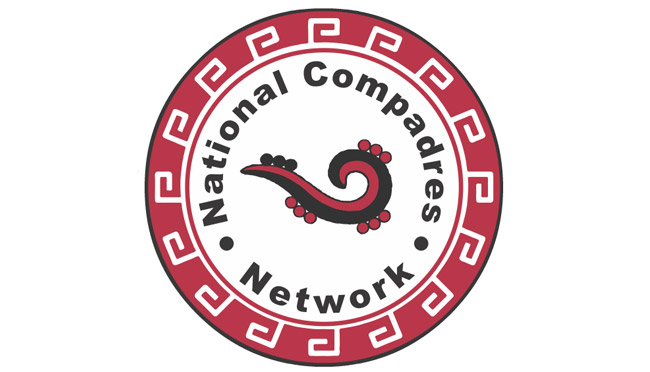
National Compadres Network
DESCRIPTION: The mission of the National Compadres Network is to strengthen and re-root the capacity of individuals, families, and communities to honor, rebalance, and redevelop the authentic identity, values, traditions, and indigenous practices of Chicano, Latino, Native, Raza, and other communities of color as the path to the honoring of all their relations and lifelong well-being.
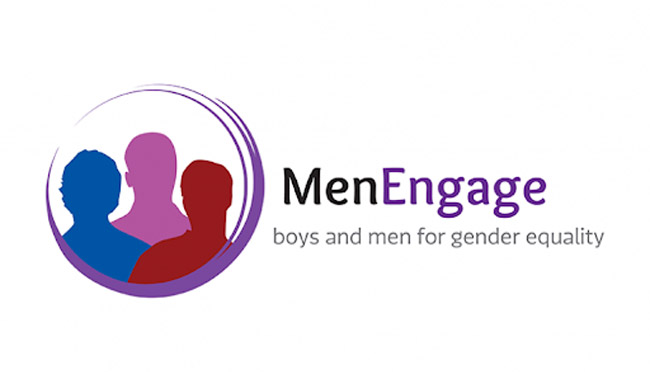
North American MenEngage
DESCRIPTION: The North American MenEngage Network (NAMEN), Inc. is a US/Canada regional network of organizations and individuals working with men and boys to achieve gender equality, end violence, and promote health for men, women and children in North America.

The Men’s Story Project
DESCRIPTION: The Men’s Story Project is a scalable storytelling and dialogue project that brings critical dialogue on social ideas about masculinity into public forums around the world – via men’s own stories. In the MSP, men, boys, and folks who identify in any way with masculinity publicly share personal stories that help transform social ideas about masculinity – all rooted in a feminist, anti-racist, intersectional framework.
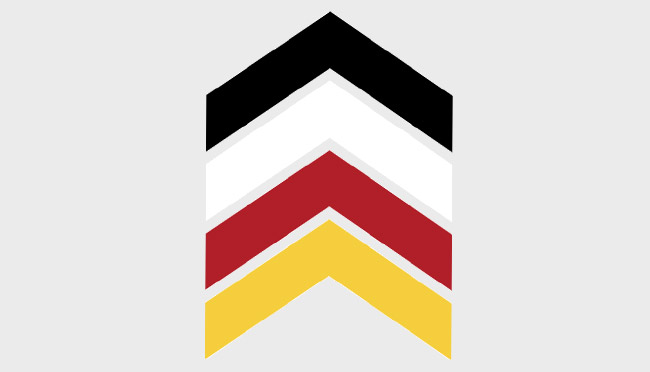
Wica Agli
DESCRIPTION: Wica Agli aims to create healthy communities where men, women, and children alike feel safe and comfortable in their everyday lives. Their mission is to reclaim traditional understandings of manhood, tied with responsibility, protection, and respect, and share them with men and boys everywhere for a safe and comfortable environment.
